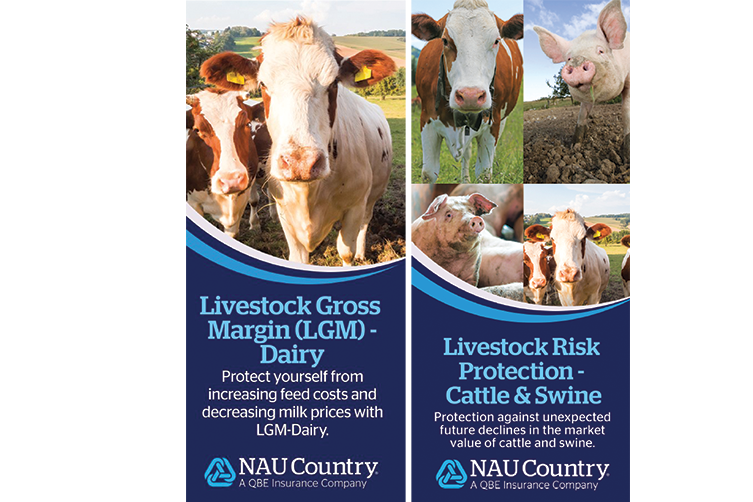Understanding Animals Risk Security (LRP) Insurance Coverage: A Comprehensive Overview
Navigating the world of livestock threat security (LRP) insurance policy can be a complex venture for several in the agricultural industry. From exactly how LRP insurance coverage functions to the numerous protection alternatives offered, there is much to discover in this thorough guide that might possibly shape the means animals producers approach danger monitoring in their organizations.

Just How LRP Insurance Policy Works
Periodically, understanding the auto mechanics of Animals Danger Defense (LRP) insurance coverage can be complicated, but damaging down how it functions can offer clarity for farmers and breeders. LRP insurance policy is a risk administration tool designed to protect animals manufacturers against unanticipated rate declines. It's important to note that LRP insurance policy is not an income assurance; rather, it concentrates only on cost risk defense.
Eligibility and Protection Options

When it comes to protection options, LRP insurance provides producers the flexibility to choose the protection level, insurance coverage period, and recommendations that finest fit their threat monitoring requirements. By comprehending the qualification criteria and coverage options readily available, livestock manufacturers can make educated choices to take care of risk effectively.
Benefits And Drawbacks of LRP Insurance
When assessing Animals Danger Security (LRP) insurance policy, it is essential for livestock producers to weigh the benefits and drawbacks fundamental in this risk administration tool.

One of the key benefits of LRP insurance is its capability to give defense versus a decline in livestock costs. This can assist secure manufacturers from financial losses arising from market variations. Additionally, LRP insurance policy supplies a degree of versatility, allowing producers to customize coverage degrees and policy durations to match their specific needs. By securing in a guaranteed rate for their livestock, manufacturers can much better handle danger and prepare for the future.
Nevertheless, there are also some downsides to think about. One limitation of LRP insurance policy is that it does not protect versus all sorts of risks, such as disease outbreaks or natural catastrophes. Costs can occasionally be pricey, especially for manufacturers with large animals herds. It is important for producers to meticulously analyze their individual risk direct exposure and economic situation to identify if LRP insurance policy is the best threat monitoring device for their operation.
Understanding LRP Insurance Policy Premiums
Tips for Making The Most Of LRP Perks
Making best use of the benefits of Livestock Danger Security (LRP) insurance policy requires tactical planning and aggressive risk monitoring - Bagley Risk Management. To make the most of your LRP insurance coverage, take into consideration the following pointers:
Regularly Assess Market Conditions: Keep notified about market trends and price changes in the livestock market. By monitoring these factors, you can make informed choices about when to buy LRP insurance coverage to secure versus potential losses.
Set Realistic Insurance Coverage Degrees: When selecting insurance coverage levels, consider your manufacturing costs, market worth of animals, and potential dangers - Bagley Risk Management. Setting realistic coverage levels makes sure that you are properly secured without overpaying for unneeded insurance policy
Diversify Your Coverage: Rather than counting solely on LRP insurance coverage, think about diversifying your threat administration methods. Combining LRP with other danger management tools such as futures agreements or choices can provide detailed insurance coverage against market unpredictabilities.
Testimonial great post to read and Change Insurance Coverage Frequently: As market problems change, occasionally evaluate your LRP coverage to ensure it aligns with your present danger exposure. Readjusting coverage degrees and timing of acquisitions can help optimize your risk defense technique. By complying with these tips, you can make best use of the benefits of LRP insurance and guard your livestock procedure against unanticipated threats.
Verdict
Finally, animals danger security (LRP) insurance policy is a useful device for farmers to manage the financial dangers related to their livestock operations. By comprehending how LRP works, qualification and protection alternatives, along with the benefits and drawbacks of this insurance coverage, farmers can make educated choices to shield their check incomes. By carefully considering LRP costs and executing approaches to take full advantage of benefits, farmers can alleviate potential losses and make sure the sustainability of their operations.
Livestock producers interested in acquiring Livestock Danger Defense (LRP) insurance policy can explore a range of eligibility criteria and coverage options tailored to their particular livestock operations.When it comes to insurance coverage alternatives, LRP insurance policy supplies manufacturers the adaptability to pick the insurance coverage degree, insurance coverage period, and endorsements that finest fit their danger management needs.To understand the intricacies of Livestock Threat Defense (LRP) insurance coverage completely, recognizing the variables affecting LRP insurance costs is crucial. LRP insurance costs are established by numerous aspects, including the coverage degree picked, the expected price of animals at the end of the insurance coverage duration, the kind of livestock being guaranteed, and the size of the protection duration.Evaluation and Change Coverage Routinely: As market problems alter, periodically review your LRP insurance coverage to ensure it aligns with your existing risk direct exposure.